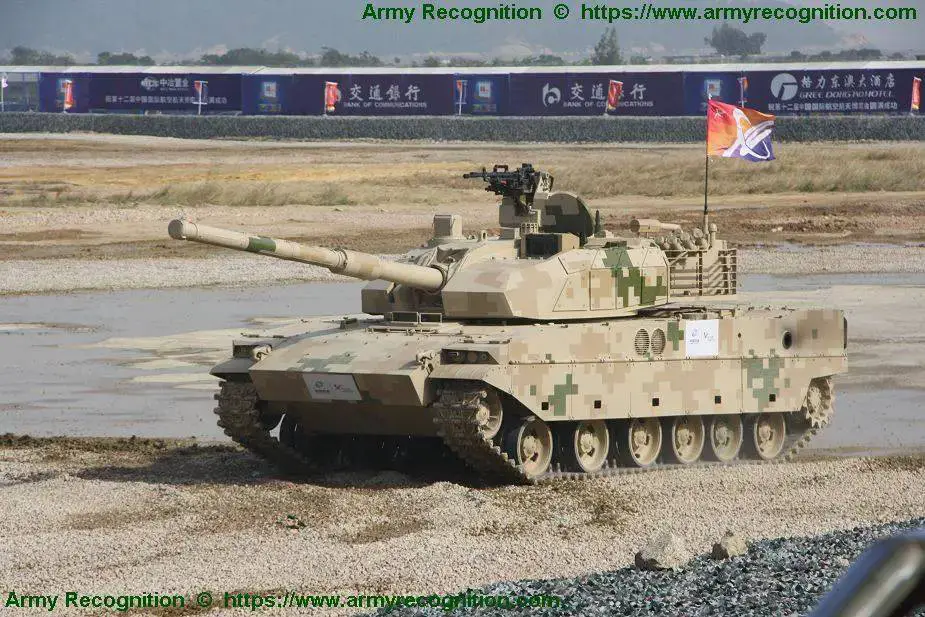Breaking news
India and China competing to align light tanks adapted to high altitude battlefields.
According to Benjamin Brimelow's article in Business Insider, tensions persist three years after the initial deadly clash on the disputed Himalayan border between India and China. Despite multiple rounds of unsuccessful talks on disengagement, both countries continue to strengthen their military forces and infrastructure in border hotspots.
Follow Army Recognition on Google News at this link

Chinese Type 15 (VT5 ZTQ-15) light tank (Picture source: Army Recognition)
China has already deployed light tanks capable of maneuvering in mountainous terrain and rapidly deploying in large numbers. This deployment has exposed the limitations of India's armored inventory, which heavily relies on main battle tanks unsuitable for high altitudes. As a result, India is planning to develop its own light tank to restore balance.
Light tanks are designed to directly support infantry against enemy positions and light armored vehicles, rather than engaging enemy tanks on their own. Their emphasis is on speed and maneuverability at the expense of armor and firepower.
Both China and India face specific challenges due to the difficult terrain that separates them, particularly for main battle tanks. The low air pressure at high altitudes hampers tank engine performance, and freezing temperatures necessitate soldiers turning on their armored vehicles for up to 30 minutes every two or three hours to prevent engine components from freezing.
China's response: Type 15
China has addressed these challenges by deploying the Type 15 light tank, one of the few modern light tanks developed in the 21st century. Unveiled in 2016, the Type 15 (also known as ZTQ-15) is a third-generation light tank operated by the People's Liberation Army Ground Force, People's Liberation Army Navy Marine Corps, and People's Liberation Army Air Force Airborne Corps. It is designed to operate effectively in highland/plateau, woodland, and water-rich regions where heavier main battle tanks like the Type 99 and Type 96 struggle. While heavily armored vehicles like the T-72 and T-90 main battle tanks face difficulties in the hypoxic environment, the Type 15 light tank can operate at high altitudes due to its powerful engine and oxygen generators. Its light weight and high power/weight ratio also make it more mobile than heavier main battle tanks.
Equipped with a 105 mm rifled gun with an autoloader and a capacity of 38 rounds, Type 15 also features a remotely operated 12.7 mm heavy machine gun and a 40 mm automatic grenade launcher as secondary armaments. It can reach speeds of up to 43 mph on paved roads and 25 mph off-road. The tank's standard steel construction is reinforced with explosive reactive armor blocks on its turret and sides. Additionally, it can be equipped with a Chinese-made active protection system. The Type 15 boasts modern electronics, including a laser range finder, nighttime and thermal optics, a warning sensor system, satellite communications, and inertial and satellite navigation systems. Its hydro-pneumatic suspension enables the tank to aim its gun higher or lower than conventional tanks, which proves useful for engaging targets at high elevations. The presence of oxygen generators enables the engine to operate at high altitudes. China is estimated to have around 500 Type 15 tanks in service.
India's initiative: Project Zorawar
India's army has been without a light tank since retiring its Soviet-designed PT-76 in 1989. Instead, it heavily relies on the T-90S Bhishma, T-72M1 Ajeya, and Arjun series main battle tanks, which weigh between 58 tons and 68 tons. These tanks were acquired with the threat from Pakistan in mind and are better suited for open plains and deserts.
Although India has intermittently sought to develop a new light tank since 1983, it has never settled on a particular model. However, the clash in Ladakh in 2020 prompted renewed efforts to acquire a light tank. In 2021, the Indian Ministry of Defense requested information from the industry regarding the production of 350 light tanks. These tanks should weigh no more than 25 tons and be crewed by two to three individuals. Additional requirements include an autoloader, a remote-controlled machine gun, the ability to fire "smart munitions" and anti-tank guided missiles, and the capacity to incorporate explosive-reactive-armor blocks.
Initially, there were speculations that India might purchase the 2S25 Sprut-SDM1 from Russia, which repeatedly offered to transfer the necessary technology. However, the Indian government expressed a preference for a domestically designed tank.
In late 2022, India's Ministry of Defense approved the purchase of 315 tanks, which will comprise seven regiments, with the order potentially rising to nearly 700 tanks. Indian multinational company Larsen & Toubro was announced as the government's development partner in September, and in April, it was awarded the contract for the first prototype. The prototype will feature an 800-horsepower engine manufactured by a German subsidiary of Rolls-Royce, as well as a 105mm gun turret made by John Cockerill from Belgium. Indian officials stated that the first tanks will be ready for trial testing by the end of this year, with an initial order of 59 units. This effort is known as "Project Zorawar," named after Zorawar Singh, a general who conquered Ladakh from Chinese rulers in the early 19th century.
Defense News July 2023






















